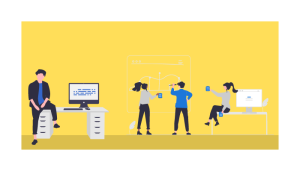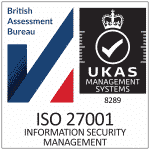Meeting rooms and desks are an essential part of workplace design for employees to do their jobs. However, CRE teams tend to measure occupancy and utilization similarly for both desks and meeting rooms, even though they are completely different.
Firstly, meeting rooms/spaces have different occupancy target levels. Secondly, employee behaviors when using meeting spaces are different to desks, which require their own set of metrics. Thirdly, by measuring total floor usage, it’s possible to miss out on cost benefits – reducing meeting room size or removing meeting space simply because most employees work from home or prefer the café in the lobby to meet!
Let’s have a deeper look into meeting rooms, the important metrics to monitor and how to use metrics to achieve greater balance in facilities.
Meeting Spaces
A meeting room is its own space type, and they come in various sizes for various purposes. There are informal two people meeting rooms all the way to formal corporate boardrooms. Typically, they’re private and designed for group communication without disrupting the flow in the main working area.
Why It’s Important to Measure Meeting Room Usage Separately
CRES must ensure safe, comfortable and sufficient spaces in-line with corporate goals and core business objectives. To get the most from your space, it’s necessary to treat space types differently. For example, by combining workstation usage with meeting room usage, metrics will be skewed making opportunity identification difficult. Meeting rooms and workstations have different purposes, and grouping usage metrics together will not provide the insight necessary to optimize deployment.
The target usage metric for meeting spaces is between 40-60% of the time. This percentage represents core business hours when people schedule meetings during the workday. Meanwhile, during the same timeframe, target workstation usage is between 70-90%. Again, meeting rooms and desks are different space types designed for different purposes. By combining both metrics together, you are under-representing desk occupancy level and over-representing meeting room occupancy.
Utilization and Occupancy Meeting Room Metrics Outlining Usage
Capturing when meeting rooms are being used, by whom, for how long and by how many people will provide a wealth of data to find rightsizing opportunities. Therefore, occupancy and utilization data capture is key. Just a quick reminder, occupancy refers to the number of people in a meeting space while utilization is how often a meeting space is being used. Broadly, the valuable questions to ask are:
- How often is a meeting room being used?
- Who is using a meeting room?
- What is the average number of people in a meeting?
- What is the target occupancy of a meeting room?
- Does actual occupancy match intended occupancy?
- What is the number and frequency of meetings in a fixed timeframe (daily, weekly, etc..)
- Do teams favor particular meeting rooms with specific technology?
- How many bookings are unfulfilled or ghosted?
- How much time has been reclaimed? Where a booking goes unfulfilled, it can be released allowing others to book.
Capturing metrics on meeting room occupancy and utilization enables benchmarking and trend identification. These data sets will fuel change, either behavioural change amongst meeting space users or hard changes like introducing new meeting space types.
How Capturing Meeting Room Usage Metrics Leads to Better Usage
Collecting and analysing usage metrics illustrates how meeting space is being used, telling you if they are worth investing in.
The data you collect answering the questions above will reveal some interesting facts about how employees use meeting rooms.
Broadly capturing occupancy and utilization metrics and demographics will enable deeper analysis. Segmenting data by user types or business groups will help identify how meeting rooms used can be improved.
Segmenting Meeting Room Analytics
Capturing data on meeting room use and who’s using it will give a very good picture of preferences by business group. Furthermore, it can highlight group bad practices.
Identifying usage patterns based on commonalities (Business Group A only books meeting rooms for 6+ meeting attendees while B books for 4-5 people to attend) will outline effective education strategies shifting chargeback and prorates to spaces.
Re-education on Booking/ Usage or Introducing Penalties
Grouping data based on similarities, like department space preference, will help identify strategies for changing behavior and bring occupancy closer to that 40-60% utilization target.
Education strategies may look to ensure that meeting room usage is in line with its intended purpose. For example, a 6-person meeting room shouldn’t be used by one person to run a web-ex. Additionally, analysing when employees are trying to book meeting space and identifying booking jams will help to improve availability and ease frustrations. Education strategies to ease meeting room booking jams can be as simple as encouraging internally held meetings to be held at times outside of historical peaks.
Digging into usage analytics, it’s possible to identify those team members who are abusing the meeting room policy. For example, booking a 6-person meeting room for only two or regularly ghosting rather than cancelling. It is important to help them to understand how such a seemingly trivial issue can have a big effect on the company and motivate them to improve booking behavior in the future.
If inappropriate use or ghosting persists, CRES Teams will have the evidence needed to penalize them until behavior is in-line with expectations.
Redevelop new spaces reflective of usage trends/ needs
Feedback from users may indicate that the current meeting space isn’t fulfilling their needs. Additionally, reviewing daily occupancy levels will help to understand if the number of meeting spaces aligns with wider, general usage.
Contemporary meeting spaces have evolved with many styles now supporting different needs from layout to technology. There are many examples of open, informal meeting space designed for teams to openly communicate and create.
With more organizations adopting flexible working practices in line with agile cultures, organizations may simply be carrying more meeting rooms than will ever be used. An emerging best practice is to review floor or building average peak occupancy to look for consolidation options.
We all know the cost that shadow space and unused space carry. If the average peak occupancy of a floor is 80 where the space was designed for 200, there is some low hanging fruit available – divesting both desks and meeting rooms.
Summary
With greater fluidity in office occupancy, CRES Teams are having an increasingly difficult time identifying wasted space and gauging the efficacy of space usage. Space deployment and balancing for users is also one of the most complicated to perfect.
Treating meeting spaces as the unique space types, they are and capturing metrics on their usage will provide opportunities to bring usage in line with expectations or bring provision in line with demand.
One way or another, meeting space will be better optimized and cost-opportunities will arise.






